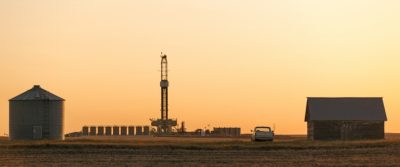Huge Backlog Could Trigger New Wave of Shale Oil

The number of drilled but uncompleted wells (DUCs) in the U.S. shale patch has skyrocketed by roughly 60 percent over the past two years. That leaves a rather large backlog that could add a wave of new supply, even if the pace of drilling begins to slow.
The backlog of DUCs has continued to swell, essentially uninterrupted, for more than two years. The total number of DUCs hit 8,723 in November 2018, up 287 from a month earlier. That figure is also up sharply from the 5,271 from the same month in 2016, a 60 percent increase. The EIA will release new monthly DUC data on January 22, which will detail figures for December.
Some level of DUCs is normal, but the ballooning number of uncompleted wells has repeatedly fueled speculation that a sudden rush of new supply might come if companies shift those wells into production. The latest crash in oil prices once again raises this prospect.
The calculus on completing wells can cut two ways. On the one hand, lower oil prices – despite the recent rebound, prices are still down sharply from a few months ago – can cause some E&Ps to want to hold off on drilling new wells. That may lead them to decide to complete wells they already drilled as a way of keeping production aloft while husbanding scarce resources. Companies that are posting losses may be desperate for revenues, so they may accelerate the rate of completions from their DUC backlog.
On the flip side, producers don’t exactly want to bring production online in a market that is subdued.
“The lower oil price raises some questions about whether you go ahead with completing these wells,” Tom Petrie, head of oil and gas investment bank Petrie Partners, told S&P Global Platts. “Some companies want to get them in a producing mode; others say they won’t get an adequate return right now, so they’ll wait.”
Rob Thummel, managing director at Tortoise Capital Advisors, told S&P Global Platts that companies may have already started to work through some of their DUC inventory late last year. He suggests that the explosive production figures in 2018 seem higher than last year’s rig count justified. A higher rate of completions from already-drilled wells may explain the higher output levels.
However, the pipeline bottleneck in the Permian – which, to be sure, has eased a bit as some additional capacity has come online in recent months – could prevent a sudden rush of DUC completions. After all, the soaring number of DUCs was itself at least in part the result of the pipeline bottleneck.
A handful of new pipelines will add significant new pipeline capacity in the second half of 2019, after which more DUCs could be completed. Last summer, Pioneer Natural Resources’ CEO Timothy Dove warned in a conference call that oilfield services costs could increase when those pipelines come online because producers may rush to complete DUCs all at once.
“[T]hat could be another period of inflationary activity to the point where everyone is trying to get their DUC count reduced,” Dove said last August. “And so I would say the bigger risk inflation-wise is really past 2019. It’s really 2020 and 2021.”
The prospect of higher completion rates has ramifications for U.S. production levels. DUCs may keep U.S. oil production aloft at a time when low prices are starting to curtail drilling activity. The rig count has been flat for a few months, production growth has slowed, and growing number of companies are detailing slimmer spending plans this year.
That may ultimately translate into disappointing production figures.
“As a result of the slide in oil prices over the past three months, operators have already started to guide down activity for 2019 compared to their initial plans to ramp up activity,” Rystad Energy wrote in a recent commentary. “Consequentially, we have lowered our expectations for oil production growth by about 500,000 bpd for 2020 and 2021, implying less need for takeaway capacity.”
But completing DUCs is low-hanging fruit. The cost of drilling a well accounts for 30 to 40 percent of the total cost, according to S&P Global Platts. As a result, companies deciding on whether to bring a DUC online has already incurred the drilling costs. A shale company may decide to scale back on new drilling this year because of low prices, but the rush of fresh supply from DUCs may allow output to continue to grow. Of course, any decline in new drilling will eventually be felt in the production data, but that may not show up until somewhere down the line. More completions from the DUC backlog could keep near-term production figures on the rise.
How this shakes out is anybody’s guess, but at a minimum, the explosion in DUCs over the past two years complicates oil production forecasts for this year.
*
Note to readers: please click the share buttons above. Forward this article to your email lists. Crosspost on your blog site, internet forums. etc.
This article was originally published on OilPrice.com
Nick Cunningham is a freelance writer on oil and gas, renewable energy, climate change, energy policy and geopolitics. He is based in Pittsburgh, PA.
Featured image is from OilPrice.com

